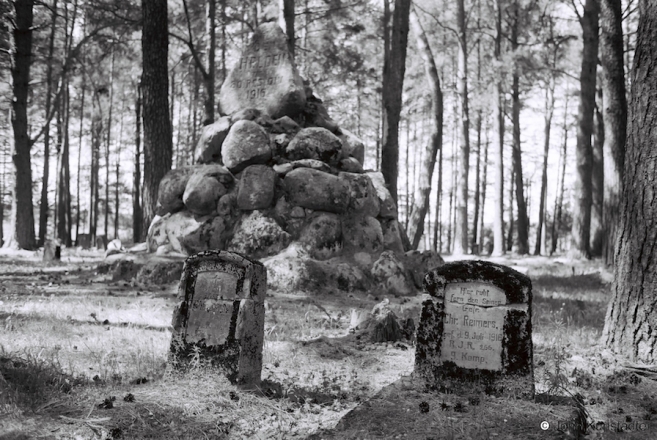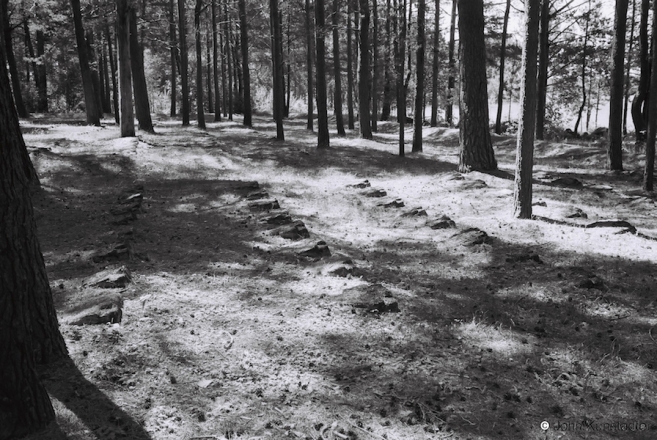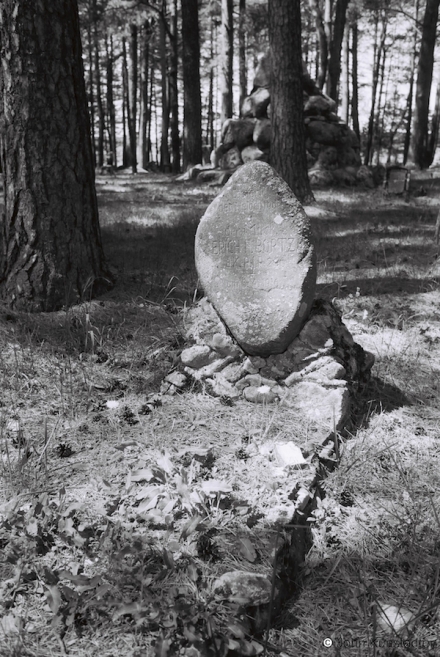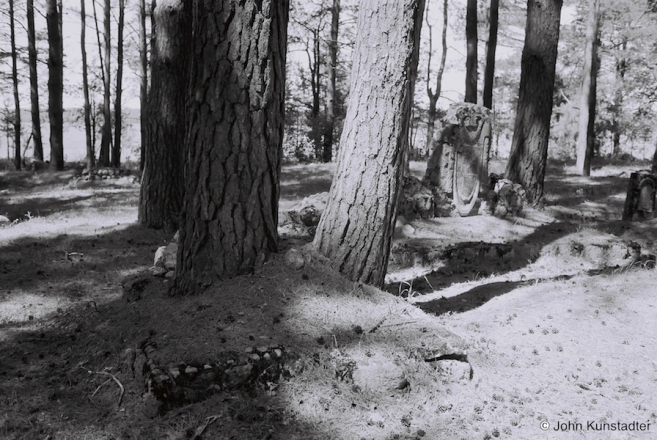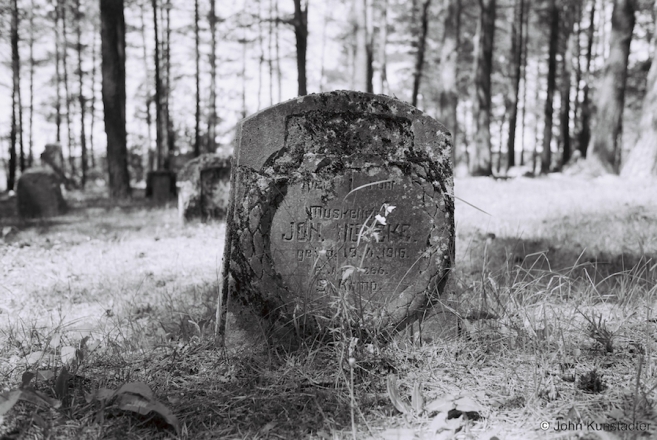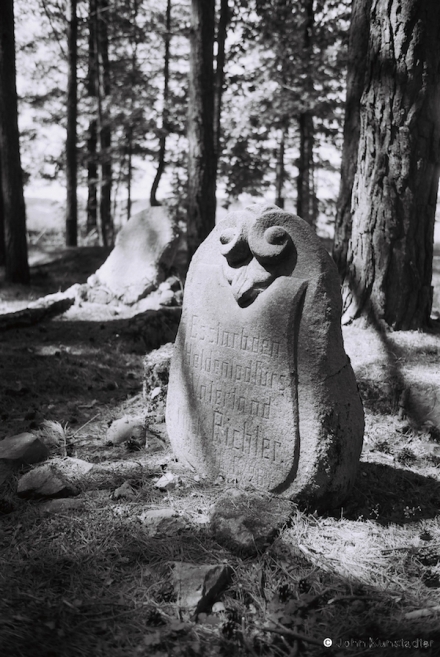World War I cemeteries (part XLIX): cemetery of the 80th Reserve Infantry Division, one of three German World War I cemeteries in Pron’ki (Mjadzjel District).
From September 1915 to November 1917 the German, Austrian and Russian imperial armies, indifferent to the rights of the Belarusian nation, contested part of the World War I Eastern Front on a static southwest to northeast line across Belarusian lands. According to Belarusian photographer-historian Uladzimir Bahdanau, during that time the German, Austrian and Russian imperial armies established more than 300 military cemeteries along this section of the front. Estimates vary from 106 to more than 150 German cemeteries which remain or whose former sites are locatable.
After World War I the newly-formed German War Graves Commission (Volksbund Deutsche Kriegsgräberfürsorge — VDK or “Volksbund”) paid the government of the Second Polish Republic to look after German war cemeteries on Polish territory. Between 1921 and the Nazi-Soviet invasion of September 1939 Polish territory included the western Belarusian lands. The Poles undertook careful exhumations and where necessary reburied soldiers’ remains under new concrete crosses or tombstones. In many cases German cemeteries contained remains of soldiers from the Russian imperial army; the Poles treated those remains with equal respect.
In stark contrast, at no time did the Soviet regime show interest in honoring Russian imperial army graves in territories under Soviet occupation. After occupying the western Belarusian lands when it invaded Poland in September 1939 together with Nazi Germany and again after driving the Germans out in 1944, the Soviet regime neglected, or allowed the destruction of, World War I cemeteries there. Some local Belarusian authorities continue to allow depredation of German World War I cemeteries to this day, for instance in Bartashy (Shchuchyn District) in 2018.
Regarding sites of Russian cemeteries, since the mid-1960s (i.e., in Kreva), but especially since 1991, Belarusian volunteers have more and more actively placed memorials to honor common graves or, now more frequently, identified soldiers of the Russian imperial army.
Since the collapse of the Soviet empire, the Volksbund has joined the efforts of Belarusian volunteers and local historians to put some of the German World War I cemeteries in Belarus in order.
Могілкі Першай сусьветнай вайны (частка XLIX): могілкі 80-ай запаснай дывізіі нямецкай імперскай арміі, адны з трох нямецкіх могілак Першай сусьветнай вайны ў в. Пронькі (Мядзельскі раён).
Eightieth Reserve Division monument.
Помнік 80-ай запаснай дывізіі.
Rows of simple gravestones are more prevalent in German World War I cemeteries in Belarus.
У бальшыні на нямецкіх могілах Першай сусьветнай вайны ў Беларусі знаходзім простыя гарызантальныя надмагільныя плынты.
However, one also finds more elaborate individual tombstones of soldiers who fell in the earlier part of the 1915-late 1917 positional warfare/trench campaign.
Хаця можна бачыць таксама большыя, індывідуальна ўпрыгожаныя надмагільлі ўпалых у ранніх стадыях доўгай (1915-позна 1917 гг.) акопнай вайны.

